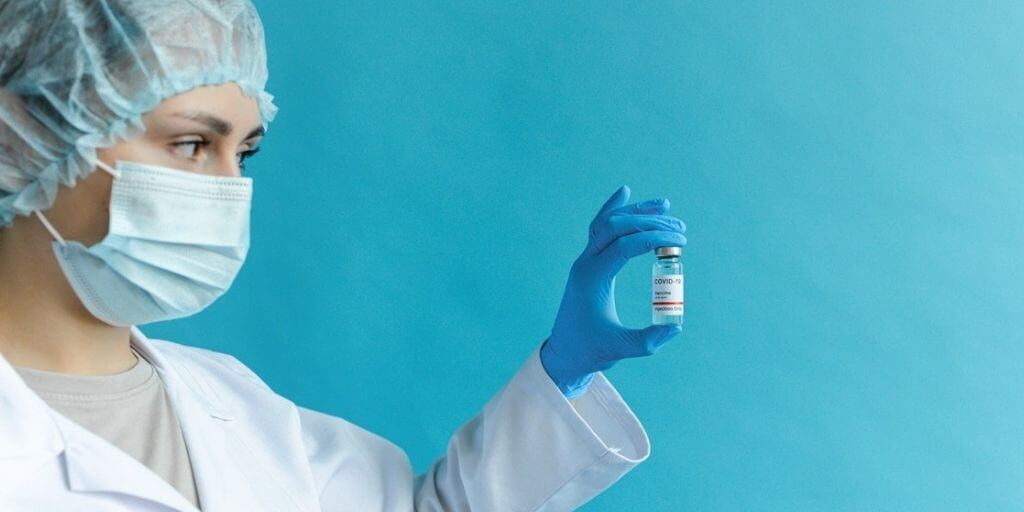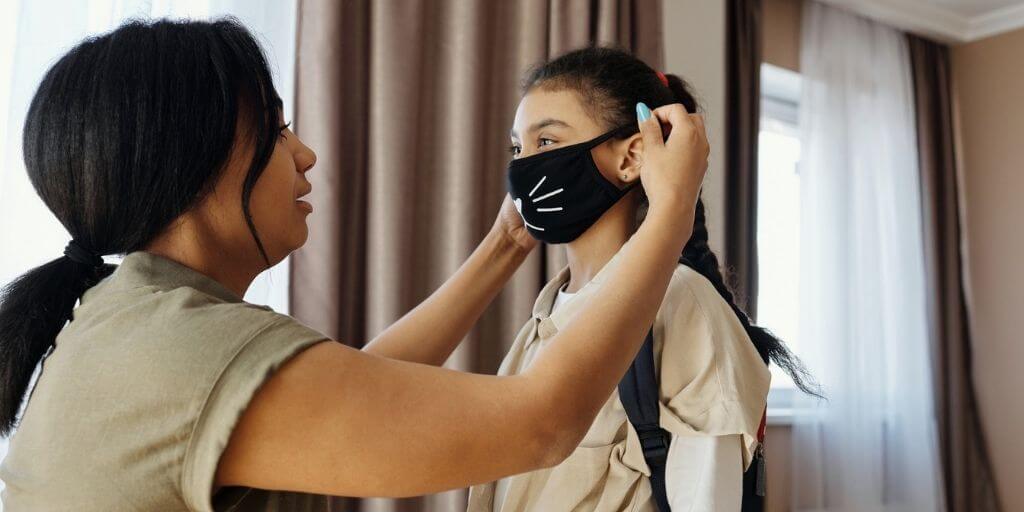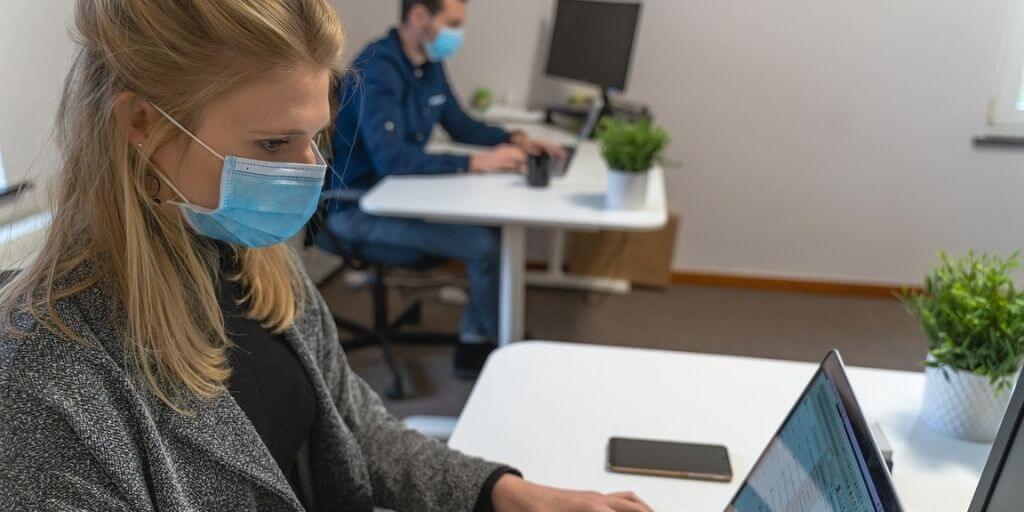The New York Health and Essential Rights Act (NY HERO Act) requires employers to put plans in place to protect workers in the event of future infectious disease outbreaks. Although motivated by the COVID-19 pandemic, the plans are not specific to COVID. In fact, the State’s model airborne infectious disease exposure prevention plans were released on July 6, 2021–after the COVID-19 state of emergency had been lifted. Thus, while the law requires employers to adopt plans, the plans themselves will only take “effect” in the event of a future outbreak of an airborne infectious disease.
For more on the NY HERO Act generally, read:
New York HERO Act Goes Far Beyond COVID
NY HERO Act Amendments Reduce Employer Burdens
Employer Obligation
All private sector (non-government) employers in New York State must adopt an airborne infectious disease exposure prevention plan by August 5, 2021.
Employers must provide a copy of their plan to all employees within 30 days after adopting the plan. After that, all new employees must receive a copy of the plan with other new-hire paperwork at the beginning of employment.
As the basis for meeting the plan requirement, employers must review the “Airborne Infectious Disease Exposure Prevention Standard” and the general and industry-specific template plans.
Airborne Infectious Disease Exposure Prevention Standard
The New York Airborne Infectious Disease Exposure Prevention Standard applies to private employers with worksites located within the state. It only applies when the NYS Commissioner of Health has designated an airborne infectious agent or disease as “a highly contagious communicable disease that presents a serious risk of harm to the public health.” This threshold generally will not include coverage of seasonal diseases, such as the flu.
The Standard addresses two primary components:
- Exposure Prevention Plan
- Exposure Controls
It also discusses relevant statutory anti-retaliation protections.
Exposure Prevention Plan
Each covered employer must establish a written airborne infectious disease prevention plan. Companies can either adopt the State’s model plan for their industry or create their own plan containing all necessary elements. However, deviating from the model plan requires agreement with any union in place or “meaningful participation” of employees if there is no union.
Employers must review and update their plan as necessary, including to reflect new or modified employee assignments related to safety compliance.
A notable new requirement under the DOL’s standard compels employers to verbally review the plan (and related employee rights) with all employees. Although the wording is ambiguous, it appears this may not have to be done unless/until there is an airborne infectious disease that has been designated as presenting a serious risk of harm to public health. That designation also generally “activates” the pre-adopted airborne infectious disease exposure prevention plan.
Exposure Controls
A company’s plan must address specific categories of exposure controls. Most of these elements became commonplace during the COVID-19 pandemic, including health screening, face coverings, physical distancing, hand hygiene, cleaning and disinfection, and personal protective equipment (PPE).
The DOL Standard includes a requirement that employers must provide recommended PPE (such as face coverings) to employees during outbreaks of airborne infectious diseases.
Model Airborne Infectious Disease Exposure Prevention Plan
The Department of Labor’s model Airborne Infectious Disease Exposure Prevention Plan is reminiscent of the Department of Health’s safety plan templates from early in the coronavirus crisis. It takes the form of a largely complete document with space for employers to add various company-specific details.
In addition to the general model plan, there are industry-specific templates for:
The industry templates do not vary significantly from the general plan. The primary differences relate to the specific listing of “advanced controls during an outbreak.”
Introduction
The model plans begin with a general overview of their purpose. The introductory language notes that the plan will only be in effect when the New York State Commissioner of Health designates an airborne infectious disease as a highly contagious communicable disease that presents a serious risk of harm to the public health.
The introduction also states the applicable broad definition of “employees,” which includes even independent contractors.
Responsibilities
The “Responsibilities” section of the plan provides space for the company to identify itself, its covered worksites, and the supervisory employees who will enforce compliance with the plan.
Exposure Controls During a Designated Outbreak
This section contains most of the operative provisions of the airborne infectious disease exposure prevention plan. It is further divided into two sub-sections labeled “minimum controls” and “advanced controls.”
“Minimum Controls During an Outbreak” fall into these categories:
- General Awareness
- “Stay at Home Policy”
- Health Screening
- Face Coverings
- Physical Distancing
- Hand Hygiene
- Cleaning and Disinfection
- “Respiratory Etiquette”
- Special Accommodations for Individuals with Added Risk Factors
“Advanced Controls During an Outbreak” include the following:
- Elimination (of risky activities)
- Engineering Controls, such as ventilation, disinfection systems, barriers, and premises layout
- Administrative Controls
- Personal Protective Equipment
Some of these sub-component categories include space for the company to specify which controls it will use.
This section concludes with a statement that the company will obtain, store, and maintain the selected controls “so that they are ready for immediate use in the event of an infectious disease outbreak.” Though the plan itself would not take effect until there is such an outbreak, it seems employers must remain prepared at all times.
Housekeeping During a Designated Outbreak
This section addresses the basic cleaning components of preventing disease spread. In essence, it notes that high-touch objects and surfaces will be cleaned more often during an outbreak than lower-touch surfaces. And employers may need to make changes to regular cleaning schedules and procedures.
Infection Response During a Designated Outbreak
This brief section of the plan directs employers to have suspected infected people leave the workplace and follow government guidance in contacting impacted individuals.
Training and Information During a Designated Outbreak
This section seems to require employers to train employees on related issues both independent of and in the event of an outbreak of an airborne infectious disease.
As a general matter, employees must be trained on:
- Existence and location of the Plan
- Infectious disease Standard
- Employer policies
- Employee rights under the HERO Act
Additional training on all aspects of the airborne infectious disease exposure prevention plan is necessary in the event of an outbreak.
The model plan provides that the training will be “appropriate in content and vocabulary to your [i.e., employees’] educational level, literacy, and preferred language.”
Plan Evaluations During a Designated Outbreak
This plan section indicates that “the employer will review and revise the plan periodically, upon activation of the plan, and as often as needed to keep up-to-date with current requirements.” It then includes a blank table to fill in with any changes.
Retaliation Protections and Reporting of Any Violations
The model plan concludes with a statement prohibiting retaliation against an employee for exercising their rights under the plan. It also provides basic information about reporting violations.
What Your Company Must Do
First, you must have an airborne infectious disease exposure prevention plan in place by August 5, 2021. Then, you must post it in each worksite and distribute it to employees. If you have one, you must include the plan in your employee handbook.
According to the model plans, an employer would need to provide training to employees. However, this is not a statutory obligation. So, it seems the Department of Labor has found a way to mandate training on its own. Of course, any employer can forego the model plans. And the Airborne Infectious Disease Exposure Prevention Standard arguably does not require a training component until an outbreak exists. However, deviating from the model plans would necessitate negotiation with unions, if applicable, or, if not, the nebulous “meaningful participation” of employees.
Employers considering creating their own plan rather than adopting the relevant model plan should consult experienced labor and employment counsel.


